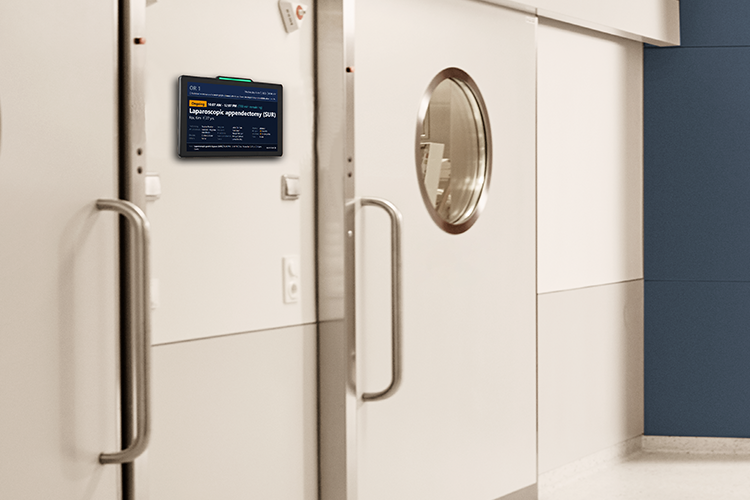Bacterial infections acquired by patients in the operating room are the most common form of healthcare-associated infection. Surgical site infections (SSIs) pose a significant threat to patient safety since they tend to cause high morbidity and mortality. Indeed, scientific research suggests that SSIs lead to death in 3 percent of cases.[1]
Avoid unnecessary OR disruptions
The good news is that hospital-acquired infections are preventable in many cases. Inside the operating room, one way to reduce infection risk is to avoid unnecessary disruptions during surgical procedures by minimizing traffic in and out of the room.[2]
Reduce OR door swings
The case for a door opening control solution was highlighted by a 2016 study [3] which found that measures including digital technology decreased door openings significantly, from an average of 37.8 per hour to 32.8 per hour during the project period.
How, then, to decrease the number of operating room door openings during surgeries? One way is to use a digital door sign solution.
Empowering frontline surgical staff to change practices that contribute to unnecessary operating room traffic is one of the most effective steps we can take to reduce infection risk during surgeries.
Real-time updates of comprehensive OR information
A digital door sign can give a transparent overview of planned surgeries and progress updates for current procedures inside the operating room. Getinge's application Torin SmartView provides real-time updates of comprehensive OR information.
- Status of the current surgery procedure
- Infection status of the patient
- Room status
- And many more customized screen configurations
Keep your staff informed and optimize surgical workflows
Our digital door sign shows the current status in around an operating room. It displays the current procedure type and its progress, the surgical staff and equipment involved, and the next planned surgery. Content can be readily adapted to include data on allergies, infections and similar risks. In short, it provides all the information relevant to an efficient surgical workflow.
